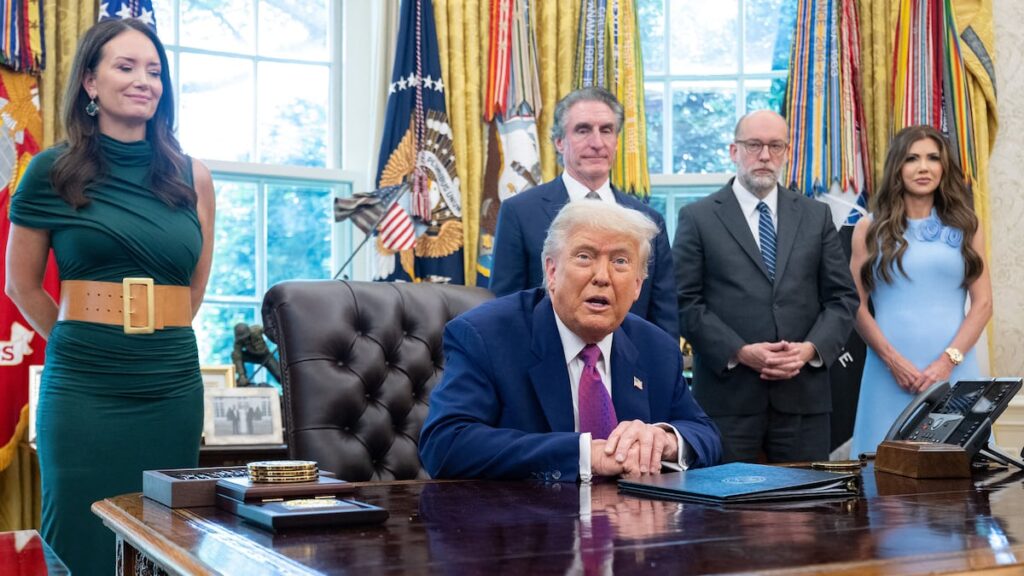The federal government gave Florida more than $4 billion last year, recovering from one of the most devastating hurricane seasons we’ve seen in a century.
If President Donald Trump eliminates federal emergency management agencies after this hurricane season, the state could be liable for the full cost of recovering the hurricane. The change could be devastating in Florida, where Hurricanes Helen and Milton cost the state more than $23 billion, experts say.
“We spend money on most municipalities, and perhaps even states, to respond and recover,” said Professor Latona Dougherty of the University of South Florida. “You can see a lot of budgets with bright red spots.”
FEMA is an important resource for Floridians after the Hurricane hit. Florida has one of the highest participation rates in the agency’s national flood insurance program, receiving more money from FEMA last year than any other state, according to the Disaster Dollar Database, which tracks federal funds for disaster recovery.
Dougherty said the support strengthened Florida’s ability to respond to natural disasters. If Trump’s promise to remove FEMA means Florida will lose all federal emergency funds, it’s unlikely to be able to compensate on its own.
The Trump administration has not outlined exactly how it will remove FEMA. According to Bloomberg, FEMA’s then-head head Cameron Hamilton’s March memo suggested reducing events and focusing less money to focus solely on “a disaster of national importance.”
“We’re going to have a big problem,” Duggerty said. “We are the most prepared with the best people and accurate hurricane data, but we are losing our funds and talent.”
FEMA dispatched nearly 900 staff to Florida County, which was affected by the hurricane last year. They performed water rescues, cleaned debris from the road and provided first aid at the pop-up disaster recovery centre.
Jeff Lindsay, director of fire and emergency services at the University of Florida, said FEMA funding cuts will affect both rural and urban areas.
Rural counties tend to see cheaper damage, but they rely heavily on FEMA workers to compensate for their relatively small emergency response sectors.
While urban counties usually have enough people to rescue and rebuild hurricanes, even Category 2 and three hurricanes can cause costly damage, Lindsay said.
FEMA’s most important role comes from precautions, according to Ethan Frey, a senior policy fellow at the Florida Institute of Policy Research.
The building’s resilient infrastructure and community program, known as the BRIC, was established in 2018 during Trump’s first administration. It gave Florida about $312 million, making state buildings and other infrastructure safer from hurricanes.
Floridians need reading
Subscribe to our free Florida with our Focus Newsletter (coming soon)
Get the biggest story happening across the state every Wednesday.
You’re all signed up!
Want more free weekly newsletters in your inbox? Let’s get started.
Check out all options
FEMA ended BRIC in April, calling it a “vain, politicized” program. The agency has recovered $293 million from Florida. This has resulted in a halt of projects in the state. This includes two in St. Petersburg, which aims to storm sewers and mitigate flooding.
“The whole idea for these programs is to reduce the costs of these storms,” Frey said. “It’s very worrying to shift the cost burden of disaster response and recovery to taxpayers.”
Frey said Trump may be cutting down certain FEMA programs for now, but funding for similar projects is likely to be at risk. This includes Elevate Florida, a national program that pays 75% of the cost to make your home safer during a hurricane.
FEMA gave the state about $400 million to boost Florida. That money is guaranteed, but Frey said the state probably won’t get any more after it’s gone.
Frey also suggested that disaster recovery grants from the Ministry of Housing and Urban Development could be eliminated. Pinellas and Hillsborough counties received more than $1.5 billion in grants to deal with the damage caused by the 2023 and 2024 storms.
Florida has many paths that can be taken to build hurricane response capabilities and compensate for lost FEMA funds, Frey said, but with an increase in state spending at the time Florida leadership has pledged to cut government costs.
“We certainly don’t have the ability at the state level to do everything that FEMA does,” Frey said. “Now there are a lot of really good programs that offer great safety nets to support our community in the middle of the storm.”

